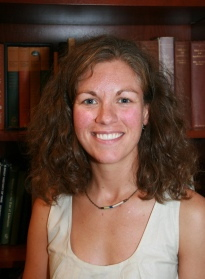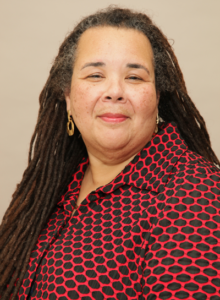faculty well-being
Select an item by clicking its checkbox

Dear Committee Members: A Novel
Date Reviewed: May 13, 2016
Non-academics who pick up Julie Schumacher’s epistolary novel Dear Committee Members might assume that they are encountering a parody of academic life. Schumacher’s academic readers, however, will wonder whether she sneaked into their own inboxes and printed the choicest items. The novel consists of letters penned by Jason Fitger, a disenchanted and mediocre professor of creative writing and literature in the underfunded English department of Payne University, a less-than-top-tier teaching college. Through his correspondence, Fitger both details and demonstrates most of the mundane (but annoying) challenges and bad behavior of academic life.
Fitger writes letters of reference for students he cannot remember, students he can remember all too well for their lackluster performance, and spectacular students whose career choices are dramatically below (their professor’s assessment of) their capabilities. His frustration at having to write letters is made worse by the combination of technology and bureaucracy that has come to characterize online letters of recommendation – Fitger is out of patience with online form submissions, whose character limits will not let him expound as he sees fit and that log him off or cut him off mid word. He often opts instead to send a letter by mail, certain that the institution will, of course, accept a letter postmarked (rather than electronically submitted) on the due date.
Fitger’s letters chronicle what are now tropes in the writing about academia – for instance, the crumbling but inhabited humanities building, though in Dear Committee Members the insult is compounded because, as Fitger’s exasperated letters detail, not only are the English department’s digs shabby by comparison to the social sciences, but are being made worse through constant construction as the floor above is renovated for the Economics department.
Throughout these letters one gets a sense of the failures of Fitger’s own life. It becomes clear, for instance, that within the administration are both his ex-wife and the (now ex-) lover for whom he left her, and his letters to each intertwine their personal histories with campus politics. Similarly, letters to graduate school friends in the world of creative writing mix advocacy for students with hints of relationships between those successful or not and laments for Fitger’s own squandered promise.
While in no way derivative, Dear Committee Members joins the ranks of academic novels such as Moo, Straight Man, and Wonder Boys. Schumacher, herself a professor of creative writing and literature, knows what she is talking about, and she deploys humor to excellent effect, waltzing the reader through an at best underwhelming professor\'s correspondence, revealing much along the way about the personalities and practices of Fitger and his fellow academics.

Disrupting the Culture of Silence: Confronting Gender Inequality and Making Change in Higher Education
Date Reviewed: February 4, 2016
As an African American female associate professor in religious studies, I heard my voice and I felt heard as I read many of the essays in this book. It is intentionally intersectional, addressing race and ethnicity (and to some degree sexual preference) as well as gender. The editors and authors are scholars and administrators in the field of sociology, generally. With this book they interrupt the culture of silence in higher education, which remains the gendered domain of white males where women continue to experience inequality.
Case studies, personal narratives and experiences, qualitative (interviews) and quantitative research raise readers’ consciousness about oppressive structures and cultures that impact women in academe. Women have made gains in the academy in terms of their increased presence, but major challenges remain. In this sourcebook each essay builds on existing research and offers suggestions for changing oppressive structures and cultures.
The book is divided into five parts, each ending with a case study, and each chapter includes a list of resources. The final chapter offers models for engendering change. The book was born among scholars concerned with bringing together service, scholarship, and activism. While much is said about women faculty in general, a number of essays focus on nonwhite women and specifically black women as the “double minority” in the academy. They are less likely to be mentored, promoted to full professor, granted tenure, and more likely to leave the academy.
Part One addresses problematic structures, such as exclusionary practices (lower wages and less upward promotions) that require faculty action to address. Also significant are the horizontal impediments to shattering the glass ceiling and not just the vertical ones (increasing numbers of women). Another example is the uneven, inequitable service burden placed on women and the accompanying fairy tale advice to ‘Just say no to service,’ which only “exacerbates gender-blind sexism in academia.” In the latter case the author suggests that institutions “just don’t ask” unless they are prepared to acknowledge and reward women’s service labor. Part Two discusses the dissonance between structures and cultures. Often structures like institutional quotas and commitments to diversity work in favor of women’s presence, but institutional cultures are resistant, hostile, violent, and unhelpful. Part Three addresses exclusionary cultures, including those that protect disciplinary canons, perpetuate the white male as the “ideal professor,” and value problem portable over problem-based research, which devalue women and the interdisciplinary work of nonwhite women. Part Four discusses “chilly climates,” “contrapower harassment,” incivility, microaggressions, and mobbing that are pervasive and often unchecked. These behaviors have greater negative impact on women with consequences for their physical and emotional well-being and job productivity. One author suggests that women of color consider a “trauma-to-transformation” model that involves redefining self, brain detoxification, sense-making, and reconfiguring the social reality.
I highly recommend this book to institutions that value diversity (without which academic excellence does not exist) and desire to create a healthy, productive environment for a truly diverse and representative faculty and administration. I also recommend it for female and male faculty and administrators impacted by cultures of silence and who are interested in disrupting and dismantling those cultures.
It’s week nine here and this is my seventh post for the Center’s blog on teaching. We’ve reached the point where I’d like to take you out for coffee and find out how it’s going. I’d love to hear about the challenges you’re ...

Faculty Fathers: Toward a New Ideal in the Research University
Date Reviewed: October 15, 2015
In this insightful project, Sallee examines a largely unexamined area of gender equity in North American higher education. Sallee provides a compelling case for why faculty work-life balance considerations ought to include male faculty on the tenure-track. In eight chapters, Sallee analyzes her study of seventy male faculty members across various ranks and disciplines in four public research institutions within the Association of American Universities: Eastern University, Mid-West University, Southern University, and Western University. The study included forty-six white faculty, five Latinos and Asians respectively, and fourteen faculty of unknown ethnicity. Regrettably, other faculty of color declined participation. Interviewees serve in humanities and social sciences, sciences and engineering, and in professional schools (such as medicine and business).
The author claims that gender norms still prescribe work expectation and research universities in particular still prize the male worker as the ideal worker: she calls the phenomenon hegemonic masculinity in a gendered-university. This study suggests that male faculty have to choose between being an ideal worker or an ideal father – if they are or plan to be a parent. For this study, conscientious fatherhood inevitably shapes one’s scholarly engagement and thereby affects research productivity, quality of scholarship or depth of intellectual thought, and choice of a research project undertaken. An engaged father would have fewer uninterrupted blocks of time for research, thinking, and for formulating solutions to difficult problems. This study concludes that a faculty father would generally seek safer lines of inquiry, projects that are closer to home, or that require less travel and commitments. Consequently, male faculty -- particularly those from Generation X on the tenure track -- tend to lean more towards their family roles than towards becoming ideal scholar researchers. Male faculty generally experience professional pressure and may feel penalized when they prioritize family commitments over research, publication, grant applications, and teaching. If a male faculty member prioritizes work, the study finds that their family will likely suffer. Some universities may grant accommodation for work-life balance, such as extending the tenure-clock or releasing faculty from teaching duties. Nonetheless, male faculty, especially those whose spouses are working (be it full-time or part-time in academic or non-academic appointments) tend not to use these privileges for fear that higher administration or their colleagues would regard them as less serious professionals and academics. While not all male faculty interviewed felt this pressure or experienced being shortchanged, most perceived inequitable expectations.
In light of her research, Sallee offers research universities policy proposals to catalyze change. She urges that universities set the standard and correct the entrenched, unhealthy culture of hegemonic masculinity and expectation in contemporary work-life tensions. I agree with Sallee. My question is how does the increasing trend of employing adjuncts complexify her inquiry, and what changes can higher education make to facilitate a healthy employment and education culture that genuinely benefits all stakeholders, not just in research universities but in most institutions of learning?
Baby Suggs, holy, is an enslaved, woman in the novel Beloved, by Toni Morrison. In the passage cited below, Baby Suggs, holy is preaching in the woods on a Saturday afternoon. Baby Suggs, holy stands on a huge flat-sided rock, prays, and then begins to preach proclaiming the essential message ...

